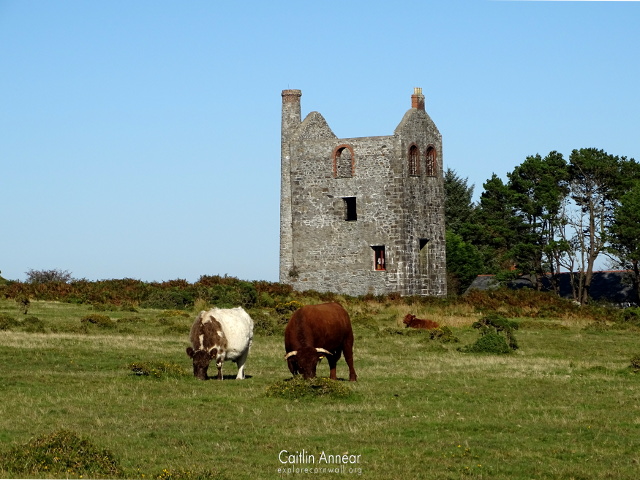Up on Bodmin Moor in the village of Minions sits the prominent engine house of South Phoenix Mine.

This mine origins start as two smaller ventures named Wheal Prosper and Greenhill Mines, although records for these are nearly non-existent. In 1836 they were worked as part of Cornwall Great United Mining Association, however this was short lived as large quantities of copper were found on the other side of Caradon Hill.

The mine was renamed South Phoenix in 1847 and worked consistently until 1865. Reopening in 1872 alongside Gonamena Mine, it acquired a new pumping engine to help dewater the deepening mine. Again, this was short lived and the company was liquidated in 1875; some small amounts of mining still carried on though. From 1880 the mine was known as South Phoenix Tin and Copper Mine Company Ltd, producing a small volume of ore before closing in 1885.
Another new company started in 1887 as South Phoenix Ltd with the hope that this section of the moors could match the success found at Phoenix United. Houseman’s shaft was deepened and Parson’s transformed into an incline shaft; while initially this appeared to be successful, this was a bad time to be running a tin mine. Work came to a halt in 1892 and it was abandoned the next year. It’s final hurrah occurred in 1906 as part of Cornish Consolidated Tin Mines Ltd, but despite money being sunk into the dressing floor and the purchase of new equipment this only lasted until 1911 when it closed for a final time.

Houseman’s (85 fathoms/115m), Prosper (60 fathoms/110m), Parson’s (110 fathoms/201m), Shelstone, North/Hazeldine’s (126 fathoms/230m) and unnamed (166 fathoms/304m).
Greenhill, Grace Dieu, Prosper No 1, No 2 and No 3, New and Shelstone/Trelawney.
1830, 1888-92: 309 tons (280,320 kg) black tin
1873-1902: 419 tons (380,110 kg) black tin
1870-1890: 68 tons (61,689 kg) black tin
South Phoenix only had a few engine houses over its life. In 1848 the mine had a 28″ pumping engine which worked until 1852. The 1872 reworking saw the addition of the whim engine from Gonamena Mine and a 25″ rotative engine. The only remaining house belonged to Houseman’s 50″ pumping engine, erected in 1881 it also pumped from Prosper shaft via flatrods.
The later reworkings of the mine also featured a significant dressing floor, including a compressor house, twenty two buddles, nine tanks, rag frame terraces and settling strips.

The whole of the mine around Houseman’s engine house is free to access and the shafts and engine house have been made safe.
Just bare in mind that the moors are active farm land and there are always lots of cows and sheep around.
There are two small car parks in the village that are free to use.
Acton, B. and Brown, K. (1999) Exploring Cornish Mines: Volume Four. Truro: Landfall Publications.
Brown, K. and Acton, B. (1997) Exploring Cornish Mines: Volume Three. Truro: Landfall Publications.
Dines, H. G. (1956) The metalliferous mining regions of south-west England. British Geological Survey.
Sharpe, A. (1989) The Minions Survey Part 1. Truro. Available at: http://map.cornwall.gov.uk/reports_event_record/1989/1989R018.pdf.
Spargo, T. (1864) ‘Eastern District from Lostwithiel to Liskeard’, in The Mines and Cornwall and Devon: Statistics and Observations. London: Vincent & Skeen.




